|
Agni-VI is an intercontinental ballistic missile under development by the DRDO for the use of the Indian Armed Forces. Agni-VI will be a four-stage intercontinental ballistic missile. Agni-6 will carry a massive three-tonne warhead, thrice the weight of the one-tonne warhead that Agni missiles have carried so far. This will allow each Agni-6 missile to launch several nuclear warheads -Multiple Independently Targetable Re-entry Warheads (MIRVs) - with each warhead striking a different target. Each warhead - called Maneuverable Reentry Vehicle (MARV) - performs evasive maneuvers while hurtling down towards its target, confusing enemy air defence missiles that are trying to destroy them mid-air. And these maneuverable warheads will give Agni VI an extended range exact figure of which is currently classified. It will be taller than its predecessor Agni V, and is expected to be flight tested by 2017. Agni-VI missile is likely to carry up to 10 MIRV warheads and will have a strike range of 8,000 km to 12,000 km. Guidance system of Agni 6 will include inertial navigation system with Ring laser gyroscope, optionally augmented by IRNSS. Terminal guidance with possible radar scene correlation (this is a kind of terrain contour mapping this improves the accuracy of missiles). Agni 5 an easy way to Agni- 6 Agni-V is an intermediate range ballistic missile developed by the Defence Research and Development Organisation (DRDO).it is the predecessor of Agni-6. In future, Agni-V is expected to feature Multiple independently targetable reentry vehicle (MIRVs) with each missile being capable of carrying 2–10 separate nuclear warheads. Each warhead can be assigned to a different target, separated by hundreds of kilometers. Agni 5 can be easily upgrade to an ICBM with minor changes. Have a look how it is possible. A major factor towards greater range would be the weight reduction in the 50-tonne Agni-5, as older, heavier sub-systems are replaced by lighter, more reliable ones, including many made with lightweight composite materials. A major development in this regard is the replacement of hydraulic actuators in the Agni-5’s giant first stage with the state-of-the-art, electro-mechanical actuators that already equip Stage-2 and Stage-3. Moving from hydraulic to electro-mechanical actuators not only saves weight due to lightweight components, but also eliminates problems like oil storage and leakage, and the need for an accumulator. In addition, electro-mechanical actuators are more reliable and easy to maintain. Currently, the Agni-5 has a metallic first stage, made of “maraging steel”, while the second and third stages are entirely built from lightweight composites, which were first tested in the Agni-4 on 15 Nov 2011. Stage-1 components like high-temperature rocket motor nozzles are already being made of composites. Gradually, the Agni-5 could become an all-composite missile that is significantly lighter than at present. According to DRDO Scientists “No major development is needed to upgrade an Agni-5 into an ICBM. All that is needed is to improve materials to make the missile lighter, with better propulsion”. That would make the Agni-5, with an estimated current cost of Rs 100 crore per piece, the world’s most cost-effective ICBM. It could cost just one-third the price of an American ICBM, as estimated by the respected Federation of American Scientists. Agni - 4 Agni - 5 Agni - 6 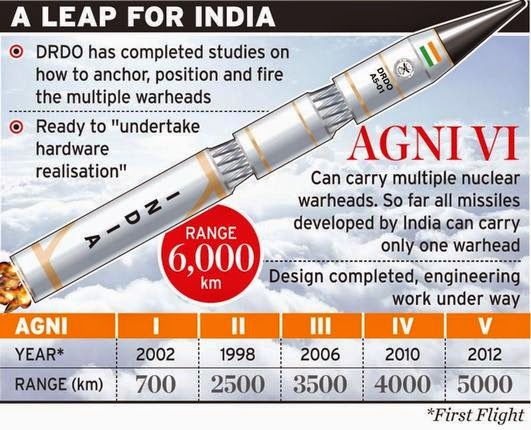 Technological Challenges in Agni-6 Multiple Warhead Technology DRDO is at an advanced stage of integrating warhead technologies, but one notable challenge is building a booster rocket that can propel a three-tonne payload to targets more than 6,000 kilometres away. The payload weight is comparably more than what a GSLV can launch. The missile should also be able to deploy decoys and chaffs to evade air defense systems Weapons Delivery Analyzing a ballistic trajectory is a simple physics problem, but there is big difference betweem analysis and implementation. Recording the necessary data, rapidly analyzing it, combined with ever changing variables, to determine the precise moment to release a warhead so that it hits a specific target 6-7 thousand kilometers away, is not a simple task. Therefore, dispersing nuclear warheads is another major technological challenge. Miniaturization Miniaturization of nuclear and thermonuclear weapons as has been obtained to fit the nose cone spatial shape of Agni-VI missile. Support Structures The building blocks from boosters to radars, seekers and sophisticated mission control centers are currently available. DRDO had been able to develop key Radio Frequency seeker technologies for missiles, it has since indigenously perfected this technology, and digital processing during the missile's boost, mid-course and terminal phase is based on DRDO’s own software. Mobility India’s ballistic missiles are compact and road mobile, even the Agni-6 with its heavy payload will be road mobile. DRDO will do this by building the first stage with composites, fitting the Agni-6 with India's first composite 40-tonne rocket motor. This is a technical challenge but India has good capability in lightweight composites. The road mobile Agni-6 would also have stringent limits on its length. It must be carried on a standard size trailer that can move from one part of the country to another, turn on roads, cross bridges and climb heights. As the payload weight increases, will require more advanced technologies to keep the missile's length constant. Weight & Dimension Harnessing maximum performance from smaller rockets also becomes especially important in submarine launched ballistic missiles (SLBMs) version, which cannot be any longer than 13 metres so as to fit into the cramped confines of a submarine. This holds true to even the K-4 "Sagarika" SLBM for the country's Arihant-Class, Chakra-Class Nuclear-Propelled ballistic missile attack submarines (SSBNs). Specifications of Agni – 6 Weight – 55000 – 70000 kg Length – 20 – 40m Diameter – 2m Warhead – Nuclear / Thermo Nuclear Warhead – 3 tons Engine – 4 Stage solid fuel Range – 8000 – 12000 Km Courtesy – Ajaishukla blogspot, Wikipedia, DRDO and many more Internet resources
JITENDRA Dubey
2/16/2017 12:18:21 pm
Very nice But I want that India's have should be long range missile system as-10000km 12000km,12000km to 16000km,16000km to 20000km beacuse China's Dong Feng Series missile can fight over 14000km and Russia missile RM-35 can fight 16000km.
Reply
#Marut_Admin
6/18/2017 12:10:49 pm
We don't have enemies that much far away. Our current missile ranges have covered our enemies. In terms of perfection, our Missiles are much much perfect than theirs
Reply
Krisgopal
6/19/2017 03:10:35 am
Yeah! I do wish should HV more longer range missiles passing 20000kms, I want India to surpass China in all & bring them under us guessing!!
Reply
sunil deore
6/18/2017 06:18:48 am
Reply
Venka Reddy K
8/1/2017 07:57:45 am
Reply
Heston
1/15/2018 10:55:11 pm
The usa sent its navy and threatened india in 72 war india should have ability to hit any country including war mongering western countries get your head out youe ass
Reply
Leave a Reply. |
AuthorPalash Choudhari Archives
June 2021
Categories
All
|
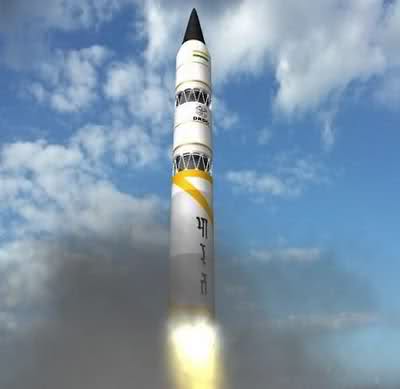
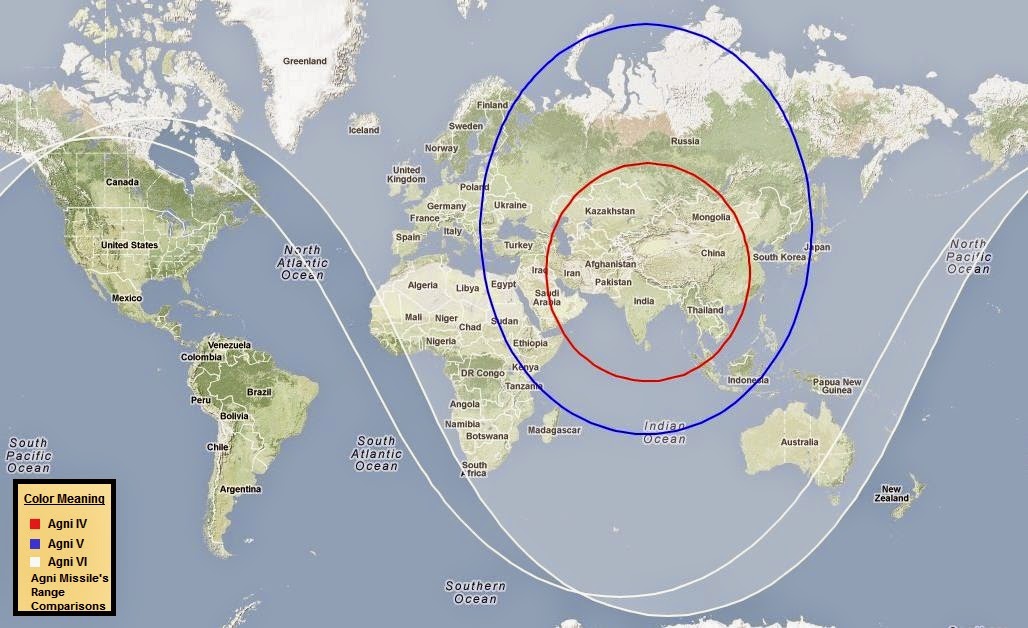
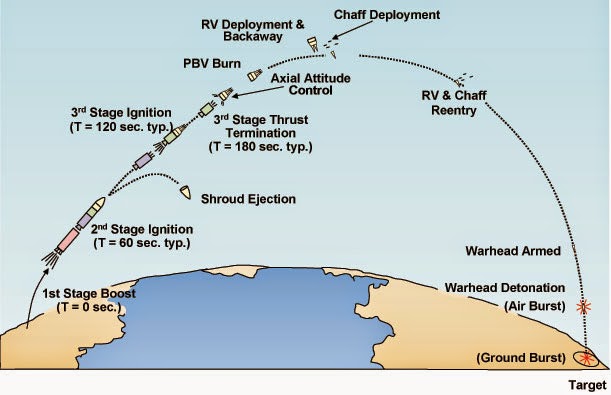
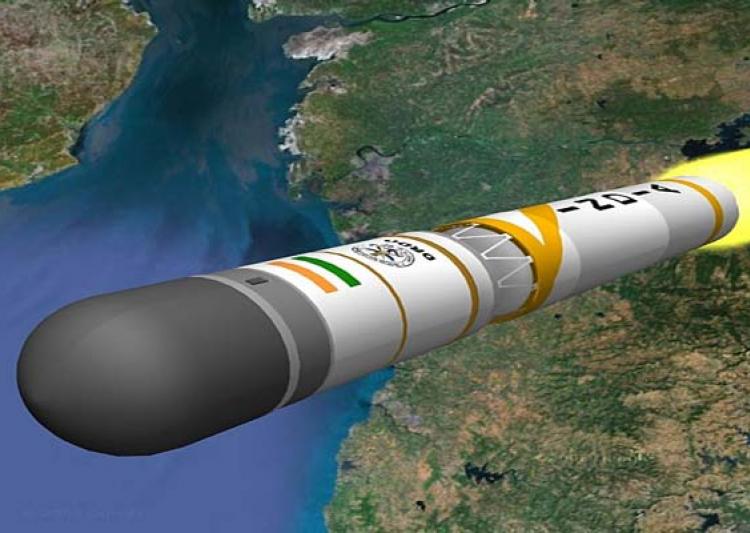
 RSS Feed
RSS Feed
